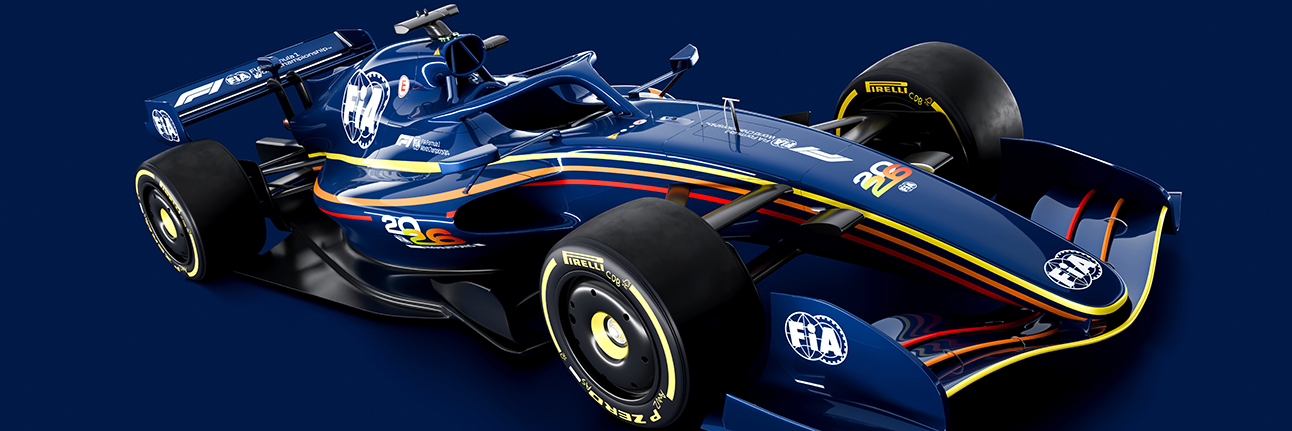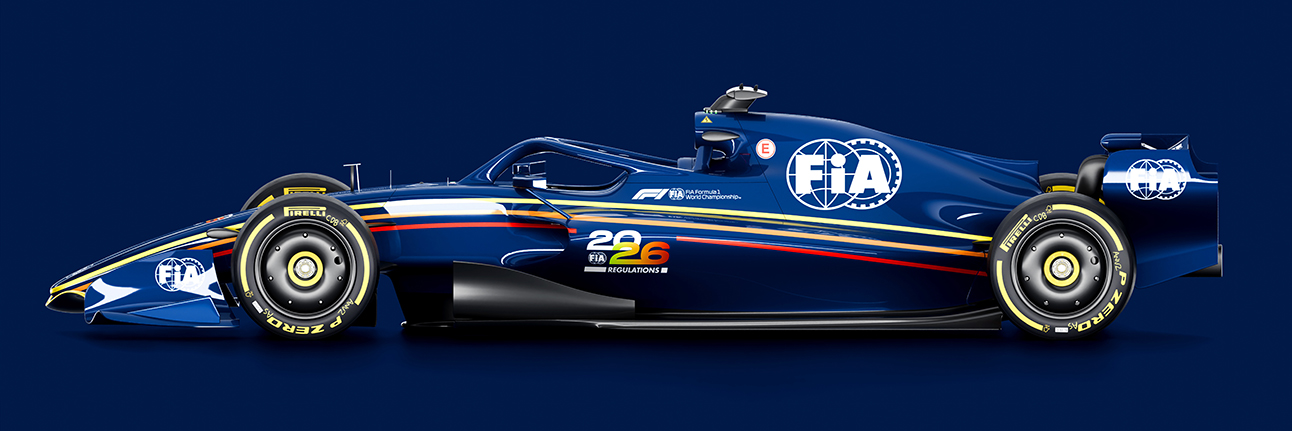
F1 2026 rules and regulations: the talking points
07 June 2024The FIA has revealed F1’s latest set of regulations to be introduced for the 2026 season. These new rules focus on reducing the size and weight of current-era cars, the introduction of active aerodynamics and lower drag, plus an increase in the electrical power accessible to drivers, all with the ambition of creating closer and more entertaining races.
F1 2026 will have smaller cars on the grid
Narrower
Shedding size and weight is the name of the game for this new generation of F1 cars. From 2026, the wheelbase will be 20cm smaller, down from 3.6m in 2024 to 3.4 in 2026. The overall width has also dropped from 2m to 1.9m in 2026, along with a 15cm reduction in floor width. The 18-inch wheels remain but will be 2.5cm and 3cm narrower on the front and rear, respectively.
Lighter
Despite a switch to even heavier, more hybridised engines, there will be a 30kg reduction in minimum weight for 2026 F1 cars. The change will see a drop from 798kg in 2024 to 768kg in 2026.
Both the reduction in size and weight are in a bid to make the cars lighter, nimbler and more agile to promote more overtaking and better racing, ultimately benefitting the fans with a more exciting sporting spectacle.

Less is more in F1 2026
Less drag
Efficiency is another branch to the F1 2026 regulations. The nature of the 2026 engines would mean a massive drop off in top speed if the cars were to remain as draggy as they are currently, so there will be a whopping 55 per cent decrease in drag. Not only does this circumvent the drop in speed, but also makes the cars more energy efficient and reduces fuel consumption when travelling at high speeds.
Less downforce
Although not as significant as the drop in drag, 30 per cent less downforce is still a substantial number. The front wing will be 10cm narrower and distinctive front wing end plates brought in to eliminate outwashing and the dreaded dirty air. Front wheel arches will be a thing of the past but part of the bodywork around the wheel will be mandated, along with control boards on the front of the side pods to control wheel wake as well as inwashing. A far simpler, less curved rear wing and the removal of the beam wing will reduce downforce further.
Ground effect: a hot topic again
A yet undisclosed part of the floor will be flat and diffuser performance will be reduced. In turn, this should reduce the overall power of ground effect and the need for stiff, porpoise-inducing setups.
What is active aerodynamics?
In essence, the front and rear wings will be ‘active’ in F1 2026, meaning that they can shift from their standard position to a ‘low drag mode’, allowing for higher speeds on the straights just like DRS does currently.
Z-Mode and X-Mode
Z-mode is the standard downforce setting that all cars will run for most of the lap, and most of the race. X-mode will then put the front and rear wings into a low downforce setting to be used on the straights in defined zones, but unlike the outgoing DRS, the distance to the car ahead will not determine if it can be used. As is the case with DRS, this mode will be deactivated manually by the driver or automatically under braking.
No DRS? No problem, apparently
The primary function of DRS is to promote overtaking, and if all drivers have access to X-Mode all the time that will have little impact on a driver’s ability to get past the car ahead. And with such little drag on the new cars, DRS would have little effect anyway. What is being implemented as a replacement for the ‘push to pass’ function of DRS is a manual override energy increase for the following car.
Once a 2026 F1 car hits 340kph, energy deployment from the MGU-K will taper off, but the override function will give drivers access to more electrical power for longer. Access to override will be allocated in much the same way DRS is currently – the following car will be given access when they get close to the car ahead. The distance and amount of usage are yet to be specified.

A 50:50 split for F1 2026
The complex MGU-H has been removed from the new generation of F1 engines, and more emphasis placed on the MGU-K with a 50:50 split across the internal combustion engine and the electrical power produced by the MGU-K. Fuel flow will be at 3000MJ/h from the turbo V6, while 350kw (470bhp) will be produced from the energy store.













